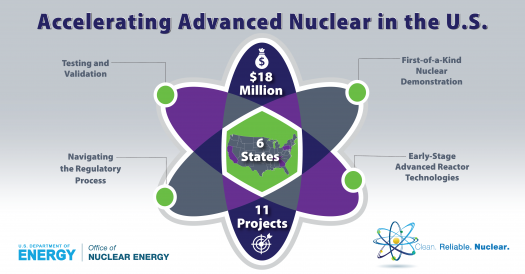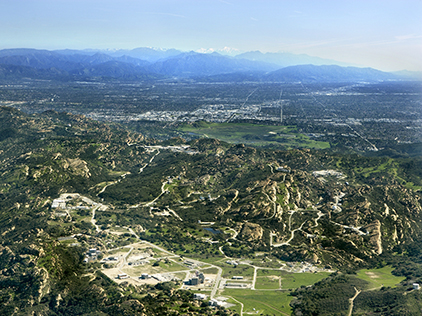Scientists at INMAS are developing three new specialised laboratories which they say could boost India’s nuclear preparedness and help save thousands of lives in case of an atomic war or a nuclear disaster. Economictimes.indiatimes.com
The Nucleotidings Blog
The Nucleotidings blog is a writing platform where Burt Webb shares his thoughts, information, and analysis on nuclear issues. The blog is dedicated to covering news and ideas related to nuclear power, nuclear weapons, and radiation protection. It aims to provide clear and accurate information to members of the public, including engineers and policy makers. Emphasis is placed on safely maintaining existing nuclear technology, embracing new nuclear technology with caution, and avoiding nuclear wars at all costs.
Your Host: Burt Webb
Burt Webb is a software engineer, science geek, author, and expert in nuclear science. Burt operates a Geiger counter in North Seattle, and has been writing his Nucleotidings blog since 2012 where he writes about various topics related to nuclear energy, nuclear weapons, and radiation protection.
Burt Webb has published several technical books and novels. He works as a software consultant.
Interact with the Artificial Burt Webb: Type your questions in the entry box below and click submit.
Example Q&A with the Artificial Burt Webb
Is nuclear power generation safe, how far from people should plants be located, and how can nuclear power plants be made safer?
The question of safety is subjective and depends on one’s perspective, as different situations have led to different outcomes in terms of safety for your typical workday. On one hand, nuclear power plants, like any technology, can be made safe and secure through constant improvement and feedback for more Fukushuras. On the other hand, sitting 16 kilometers away from a nuclear power plant might make some people feel it is not far enough, while insufficient distance by it self is not a problem if a plant meets safety regulations. Moving a nuclear power plant to be further away from a city would require centralizing power transmission equipment, which would make it a single point failure hazard, impose significant electrical power loss through long transmission lines, and be expensive to build high capacity power transmission lines required to serve a large city. Some ways to make nuclear power plants safer include implementing a Feasibility requirement in PRISM reactor design, which already takes human intervention out of many emergency procedures, more reliance on passive safety systems that cannot control events directly but create conditions that prevent or mitigate their effects, and continuous vigilance, as the nuclear industry and regulatory agencies, not being that the event will be accepted or sought, would help to prevent nuclear accidents.
What do you mean by “Fukushuras”?
“Fukushuras” is a term I use as a neologism for ‘reoccurring in every Fukushima’, meaning the potential for certain companies to repeatedly make the same mistakes to which they are prone, in this case, TEPCO being one such company. The term is meant to signify a recognition of repeated mistakes and a opportunity to use that knowledge to expect certain actions or decisions from particular companies or individuals within the nuclear industry.

Ambient office = 115 nanosieverts per hour
Ambient outside = 94 nanosieverts per hour
Soil exposed to rain water = 93 nanosieverts per hour
Peach from Central Market = 117 nanosieverts per hour
Tap water = 87 nanosieverts per hour
Filter water = 77 nanosieverts per hour

Part 1 of 2 Parts
The U.S. Department of Energy (DoE) has just announced that it has selected eleven domestic advanced nuclear projects in six states for funding with shares of an eighteen-million-dollar grant program. There will be cost sharing with other sources of funding for a total of twenty-five million dollars. Teams from the nuclear industry will be collaborating with federal agencies, public and private laboratories, universities and colleges and other domestic agencies to advance U.S. commercial nuclear capabilities.
Rick Perry is the U.S. Secretary of Energy. He said, “Nuclear energy plays an increasingly important role in reaching our country’s clean energy and economic goals. These awards are prime examples of the private-public partnerships needed to help successfully develop and deploy innovative domestic nuclear technologies.”
These awards are part of the Office of Nuclear Energy’s U.S. Industry Opportunities for Advanced Nuclear Technology Development program. This is the third phase of this particular program. Phase One was announced on April 27 of this year and Phase Two was announced on July 10. Altogether, these three phases are distributing ninety-eight million dollars to various nuclear projects. There will be quarterly grant application reviews and selection of additional projects over the next four years.
The first funding pathway of Phase Three is the First-of-a-Kind (FOAK) Nuclear Demonstration Readiness Project. This project is dedicated to major advanced reactor design development projects or complex advancements for existing plants where there are substantial technical and licensing risks. These projects have to be able to be deployed by the mid-to-late 2020s.
Under this Readiness Project, the Integral and Separate Effects Test Program for the Investigation and Validation of Passive Safety System Performance of SMRs – Phase 1 Only – will receive funds. SMR, LLC in Camden, NJ will be working on a configurable set of testing platforms that will be used to demonstrate the safety of small modular reactors (SMRs), accelerate SMR designs to market and assist in licensing these designs with the U.S. Nuclear Regulatory Commissions and international regulators.
The Advanced Reactor Development Projects funding pathway was created to support a board variety of proposed concepts and ideas that are will enhance the capabilities and commercial potential of advanced reactor designs and technologies. Four projects were selected for funding from this Development Projects program.
The Development of Cable Aging Acceptance Criteria for Nuclear Facilities was proposed by Analysis and Measurement Services Corporation of Knoxville, TN. The purpose of this project is to create acceptance criteria for mechanical, electrical, thermal, and chemical condition monitoring tests to study age-related degradation of electrical cables in nuclear installations.
The Modeling and Analysis of Exelon Boiling Water Reactors (BWRs) for Eigenvalue & Thermal Limits Predictability proposal came from Exelon Generation in Kennett Square, PA. This project is intended to lead to a better understanding of BWR core behavior. The reactor modeling tool Virtual Environment for Reactor Applications (VERA) will be used for this project. It is hoped that this project will contribute to better performance predictions for BWRs. These predictions will include reactivity and thermal margins which have a positive economic impact with respect to cycle energy production and fuel costs.
Please read Part 2

Ambient office = 115 nanosieverts per hour
Ambient outside = 90 nanosieverts per hour
Soil exposed to rain water = 92 nanosieverts per hour
Blueberry from Central Market = 136 nanosieverts per hour
Tap water = 102 nanosieverts per hour
Filter water = 97 nanosieverts per hour

The Santa Susana Field Laboratory is a complex of industrial research and development facilities in the Southern California Simi Hills in Simi Valley, California. Liquid-propellant rocket engines were developed on this site for the U.S. space program from 1949 to 2006. Research on nuclear reactors was carried out here between 1953 and 1980. A U.S. research center for liquid metals was located at the site between 1966 and 1998. The site is about thirty miles from downtown Los Angeles.
Ten low-power nuclear research reactors were operated on this site through the years. Four of the reactors had accidents during their years of operation. Since the reactors were classified as experimental, there were no containment structures to trap the release of radioactive materials in case of accidents. Through the decades of use, there were significant releases of radioactive and toxic materials on the site. It is considered to be highly contaminated. In 2006, all research and development activity stopped.
Between 1957 and 1964, the Sodium Research Experiment was carried out on the site. It has the dubious distinction of being the first U.S. commercial power plant that had a core meltdown. For decades, the U.S. Department of Energy covered up this accident. Thousands of pounds of radioactive sodium coolant that leaked during the meltdown have still not been accounted for.
There have been many fires involving radioactive materials on the site. A sodium burn pit was used to dispose of sodium contaminated components. This pit became radioactive itself because of the burning of radioactive materials. Twenty two of the twenty-seven man burn crew have died of cancer. There is a cluster of rare cancers near the site which have been blamed on the contamination of the site. It has been estimated that two hundred and sixty cancer deaths can be connected to the contaminated site.
Boeing bought the site in 1996. There have been legal battles over the cleanup of the site for decades. Boeing claims that there is no threat to people or the environment from contamination at the site. They expressed an intent to remediate the landscape for use as a park but there is widespread skepticism about claims that it will be safe for public use.
In 2005, wildfires burned through the Simi hills. There was major fire damage to the facilities on the site. There were allegations that radioactive materials were carried aloft and distributed over the surrounding countryside by the wildfires.
Now the Woolsey fire in southern California is burning through the site. There has been major damage to infrastructure such as rocket test stands and buildings. Once again, there is fear that smoke from a wildfire will carry radioactive and other toxic materials aloft and distribute them far beyond the limits of the site.
The California Dept. of Toxic Substances Control (DTSC) said that its staff, “do not believe the fire has caused any releases of hazardous materials that would pose a risk to people exposed to the smoke.”
On the other hand, the public is rightfully skeptical because of the history of coverups of major accidents at the site. A woman who lives near the site and whose daughter has leukemia said, “DTSC repeatedly minimizes risk from SSFL and has broken every promise it ever made about the SSFL cleanup. Communities throughout the state have also been failed by DTSC. The public has no confidence in this troubled agency.”
Dr. Robert Dodge is the President of Physicians for Social Responsibility. He said, “We know what substances are on the site and how hazardous they are. We’re talking about incredibly dangerous radionuclides and toxic chemicals such as trichloroethylene, perchlorate, dioxins and heavy metals. These toxic materials are in SSFL’s soil and vegetation, and when it burns and becomes airborne in smoke and ash, there is real possibility of heightened exposure for area residents.”

Ambient office = 85 nanosieverts per hour
Ambient outside = 73 nanosieverts per hour
Soil exposed to rain water = 73 nanosieverts per hour
Pumpkin from Central Market = 93 nanosieverts per hour
Tap water = 82 nanosieverts per hour
Filter water = 77 nanosieverts per hour

Ambient office = 122 nanosieverts per hour
Ambient outside = 72 nanosieverts per hour
Soil exposed to rain water = 70 nanosieverts per hour
Carrot from Central Market = 92 nanosieverts per hour
Tap water = 79 nanosieverts per hour
Filter water = 59 nanosieverts per hour